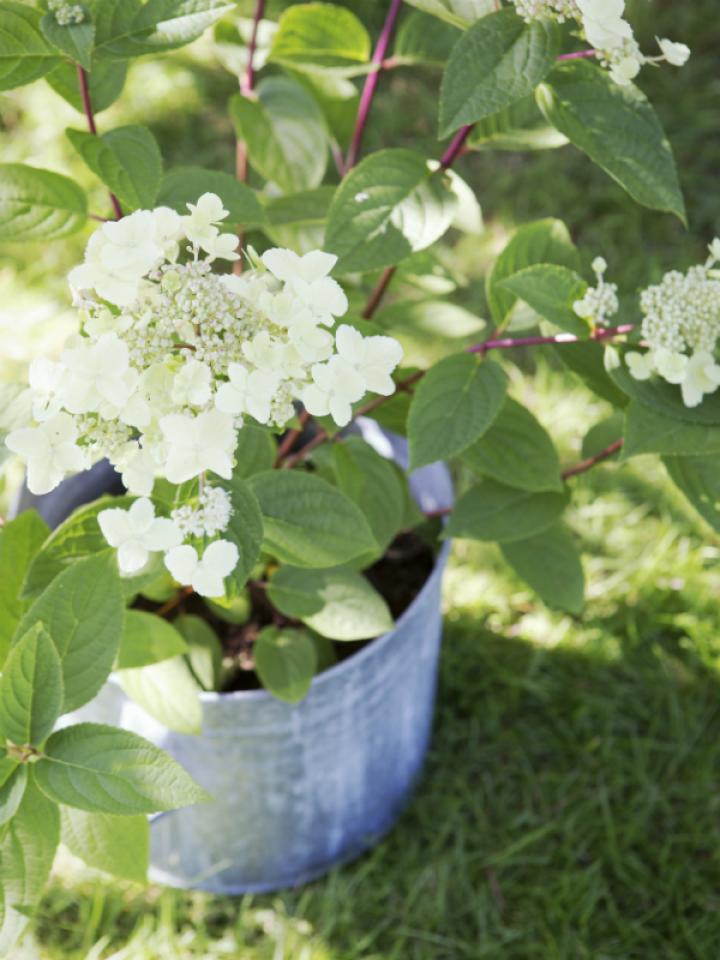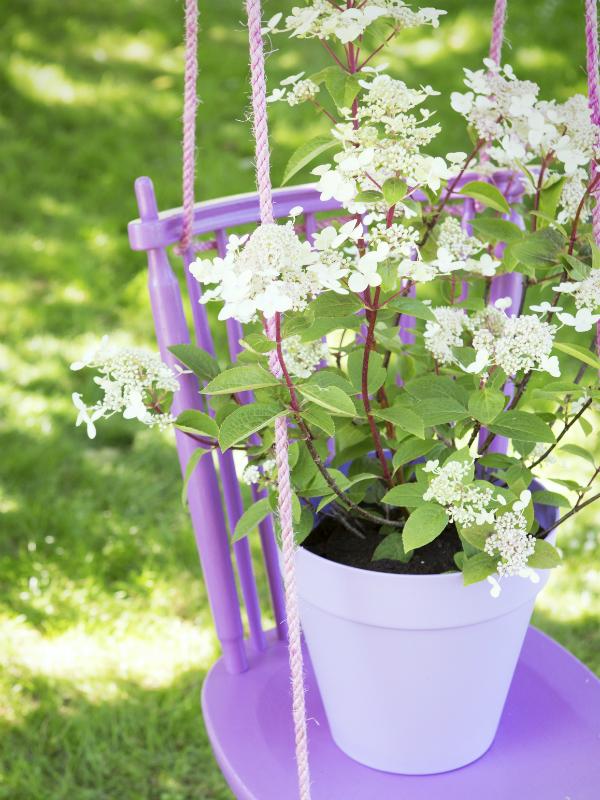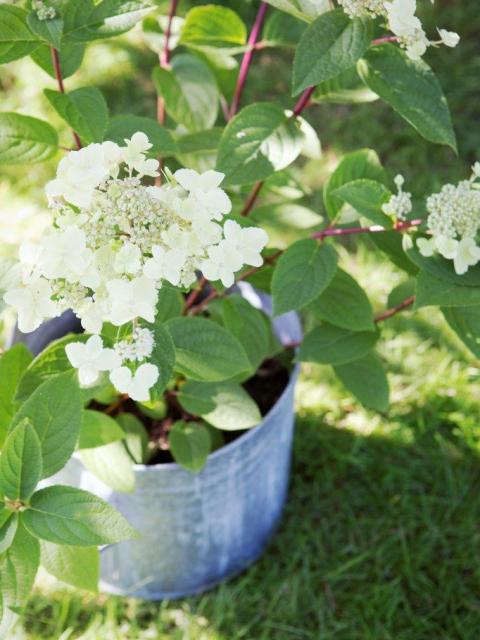From a distance the Panicle Hydrangea (official name Hydrangea paniculata) looks a bit like a bush full of blooming white, pale green or pink flaming torches. The conical clusters consist of hundreds of flowers, and are so heavy that they sway elegantly in the breeze. The Panicle Hydrangea is a strong deciduous shrub with elegant plume-shaped clusters of flowers which are 15-30cm long, and it flowers from July to September. The flower colour changes during flowering, so that it continues to be a surprising presence in the garden any time of season.
Sizeable garden plant
The Panicle Hydrangea is a close relative of the hydrangea which flowers with globe-shaped flowers. The plant is native to southern and eastern China, Korea, Japan and eastern Russia and was first described by botanist Philipp Franz van Siebold. The plant can now also be found in Europe, particularly in the cooler regions. In the wild they can reach a height of 5m and a width of 2.5m, although the version you’ll find in the garden centre, the nursery or the florist is more modestly sized. Some species are also offered as standards. Planted in the soil it makes an attractive informal hedge or a feature around which you can build a nice border. Panicle Hydrangeas work anywhere in pots, provided that the pot is spacious enough: the plants need space to grow and enough room in the soil to retain moisture.
Panicle hydrangea trivia
-
The Pancile Hydrangea’s official name is 'hydrangea paniculata'. 'Hydro' is Greek for ‘water’, and 'angeion' means 'barrel or jug'. The names refers to the opened seeds, which resemble a water barrel. Hydra also hints at the plant's need for water: panicle hydrangeas cannot cope with being dry.
-
'Paniculata' refers to the type of flowering: ‘plume-shaped cluster’.
-
The alternative name for hydrangeas - Hortensia - is derived from Hortense de Beauharnais, the first person to plant hydrangeas in Europe, after she had had them shipped from Japan on a Dutch East India Company ship.







